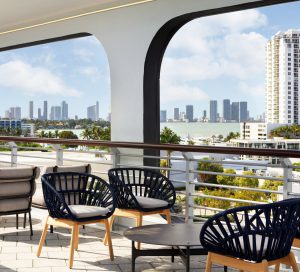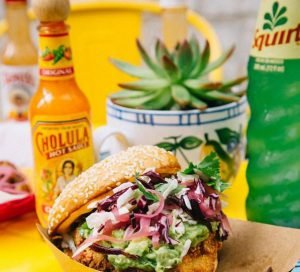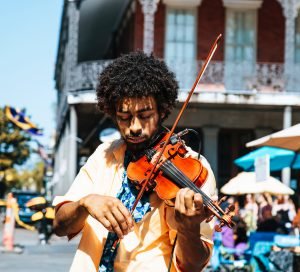The world first fell in love with Miami for its Art Deco architecture and white sand beaches in the late 1930s, but the early 1990s brought a different kind of fame to the Magic City: as the apex of sun-kissed queer culture.
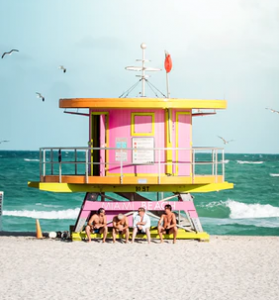
Miami Beach, Photo by Unsplash
Following a mid-20th century heyday, South Beach had lost its luster and fallen into disrepair. Neglected and downtrodden by the late 1980s, the former crown jewel of Miami was somewhere nobody dared to go; nobody except the gay community, that is. Through the creation and connection of gayborhoods, the opening of mega nightlife venues, and reinvestment in the Art Deco hotels of yore, South Beach came back to life. The LGBT community ruled the beach—as residents, business owners, tourists, artists, sunworshippers; as muscle queens rollerblading down Ocean Drive in low-cut Speedos, as drag queens parading along Collins Avenue for grand appearances at Miami’s top nightclubs, as guests at the Versace Mansion, mingling with the designer himself.
This era of gay cultural celebrity garnered global attention, branding Miami the hot spot for LGBTQ+ travelers. The progressive vibe proved particularly intoxicating to those from conservative countries in Latin America and the Caribbean, nurturing an influx of international residents and spawning an extraordinary queer, cultural melting pot.
As big money began to take over South Beach, the LGBT community spread its wings and ventured inland and north to places like the Wynwood Arts District, Mid-Beach, and up to Fort Lauderdale. Nowadays, the Miami gay scene is far more integrated and less centralized than it was some twenty years ago. However, there are still several places that skew unabashedly and unapologetically LGBTQ-centric. Here are our five favorites.

Wynwood Arts District, Photo by Unsplash
1. In the heart of South Beach, look for the rainbow flagged lifeguard station marking the 12th Street Beach. Along this block-long swathe catering predominantly to gay men, expect the ultimate pageantry among chiseled hotties in skimpy swimsuits, Bluetooth speakers blaring pop tunes, and the occasional ogling onlooker. Bring your own towels and beach props or rent a lounge chair on-site from Boucher Brothers.
2. North of Bal Harbour, passed Haulover Inlet, lies the 1.4-mile long Haulover Beach Park, which includes an off-leash dog beach, a surfing beach, a family beach and the oh-so-liberating Haulover nude beach. The clothing optional area is found in the northernmost section of Haulover Beach, and within this clearly marked naturist zone, discover all sexes, shapes and sizes present plus an unofficial gay beach.
3. South Beach’s main thoroughfare, Ocean Drive, is lined with iconic Art Deco architecture Miami and buzzes with a vibrant bar scene that includes Palace, a decades-old watering hole and café known for cheap-but-strong drinks, an eclectic crowd, and wild drag performances. While the Palace Bar drag brunch on Sunday is arguably the venue’s busiest event, the party continues day and night throughout the entire week.
4. Opened in 1993, Twist is Miami’s longest running gay club and for good reason. This South Beach institution offers multiple nightlife identities across a single two-story building, from a dimly lit dance floor with club beats to a video sports bar to a hip-hop dancehall to a salacious strip bar. The fact that it doesn’t charge a cover—nor has it ever—definitely keeps it in style. Plus, it’s open until 5am daily, idyllic for inebriated, super late-night fun.
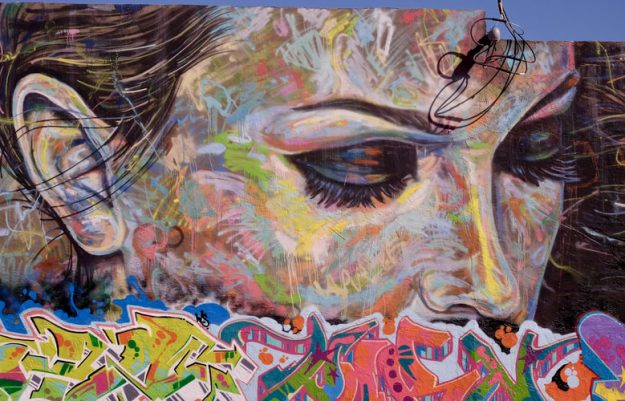
Wynwood Walls, Photo by Unsplash
5. Checking out the Wynwood Arts District, today’s global epicenter of street art, is a must on any trip to Miami. Before or after admiring all the eye-catching murals, feast on Latin-inspired cuisine at the gay-owned and operate R House Wynwood. Better yet, book in advance for the epic drag brunch, with two show times on Saturday and Sundays.

